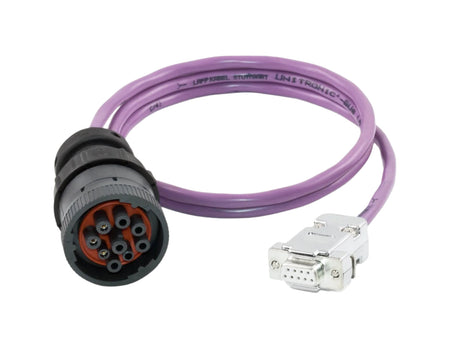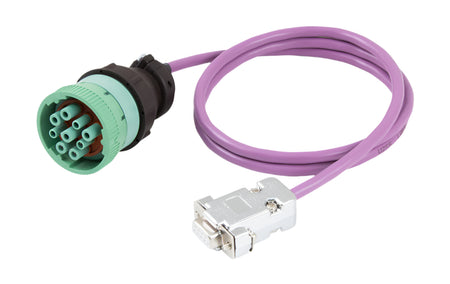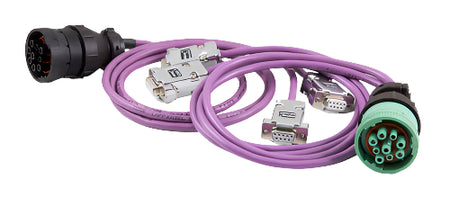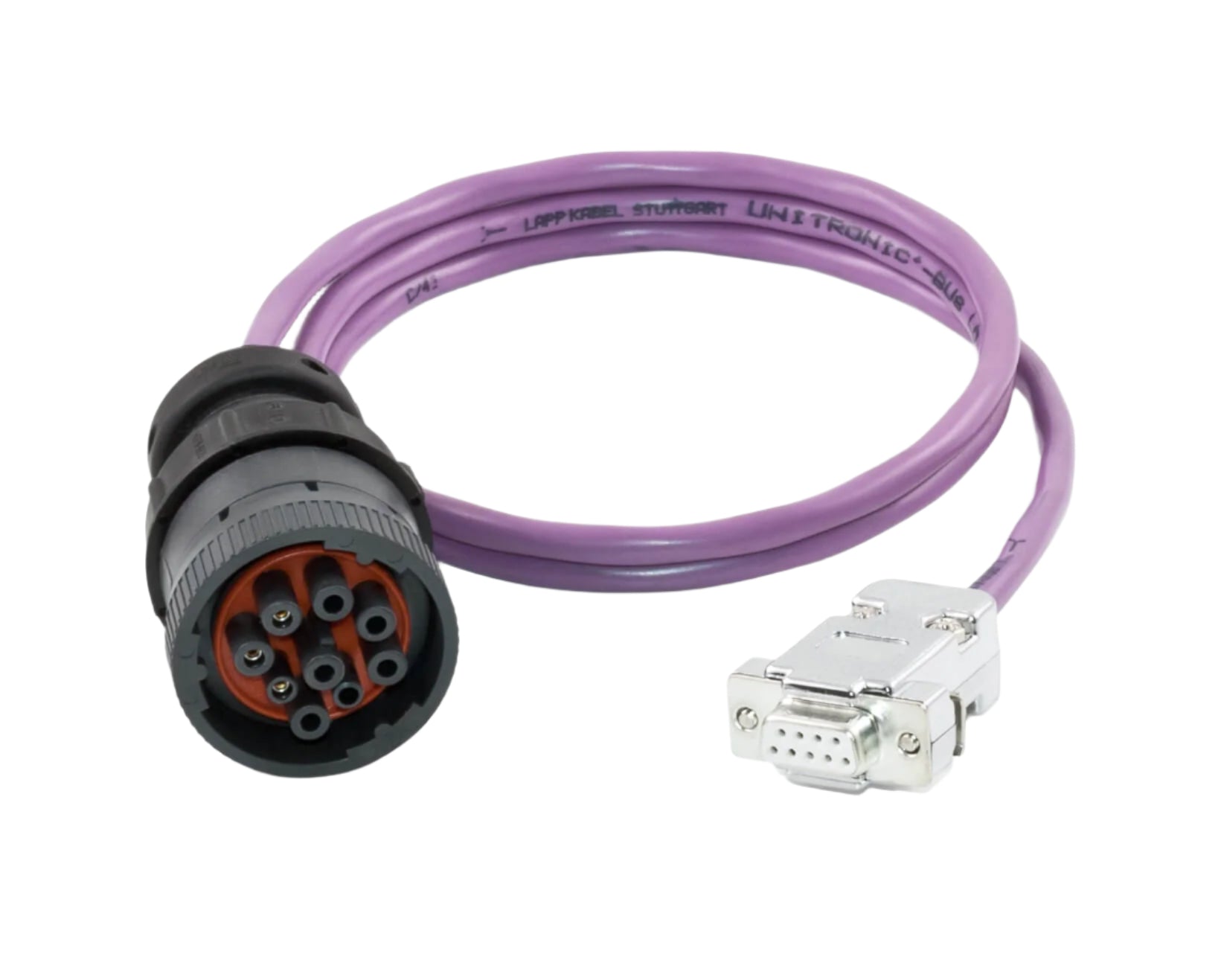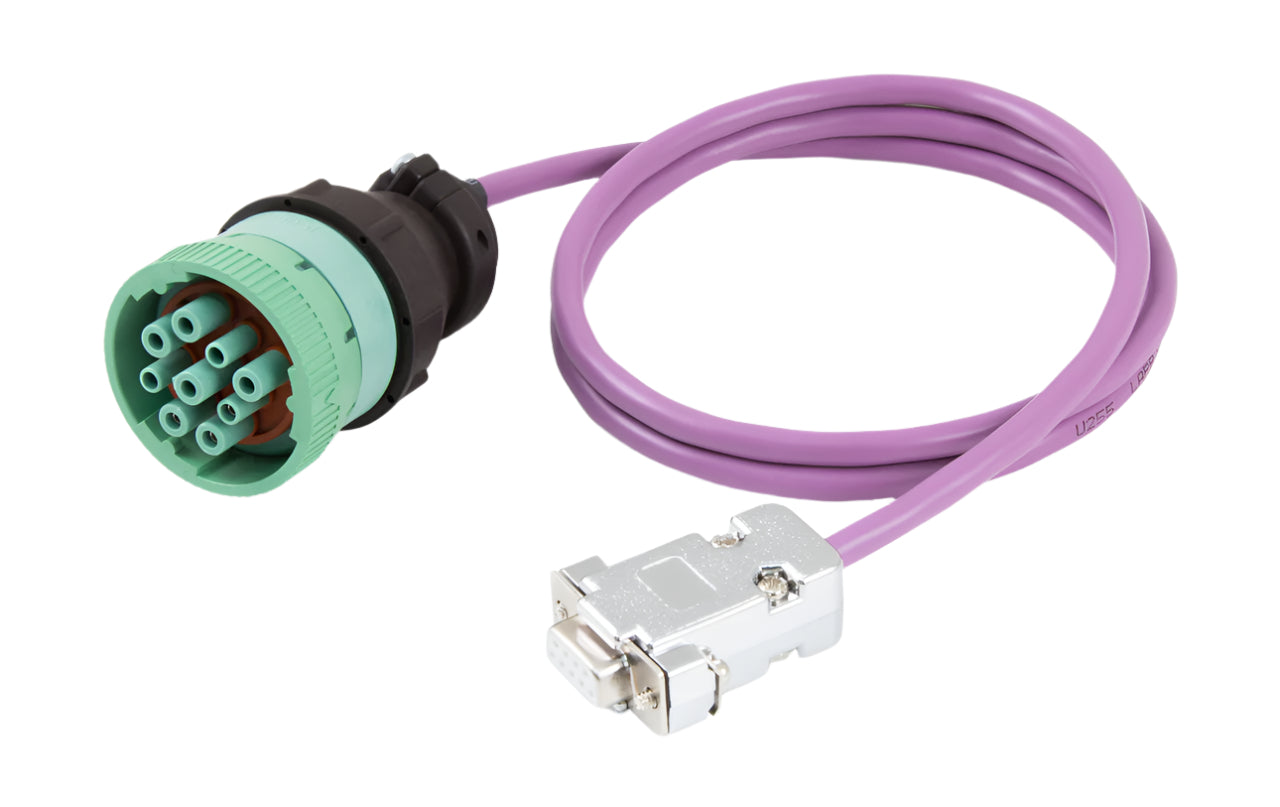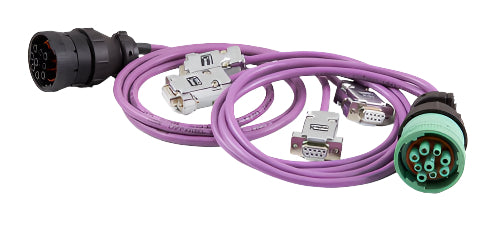- 9-pin D-Sub socket (in accordance with CiA® 102) to 9-pole DEUTSCH connector of the HD series (type 1 & type 2)
- DEUTSCH connector assignment
- C: CAN-High
- D: CAN-Low
- E: CAN-Shield
- Length 1 m
- Without termination resistor
PCAN SAE J1939 Cable
Couldn't load pickup availability
Orders placed before 2:30 Pacific Time usually ship the same day.
Items are delivered with essential accessories and easy-to-follow instructions.
Questions?
High-Speed CAN cable for J1939 Connectors
Establish standardized, reliable communication between components with the SAE J1939 connector from PEAK-System Technik. Simplify diagnostics and maintenance by quickly diagnosing faults and monitoring the performance of heavy-duty vehicles, reducing costs and downtime. Our 9-pin DEUTSCH connectors eliminate data transmission errors, enhance efficiency, and reduce wiring complexity.
Robust J1939 connectors can be applied across a range of industries, including agriculture, construction, industrial machinery, and automotive. Heavy-duty machinery and vehicles such as tractors utilize the standard SAE J1939 language across their CAN networks.
Modern heavy-duty vehicles possess a vast range of technology and up to 20 CPUs making J1939 connectors essential for communications and running multiple diagnostic checks efficiently. By routing the CAN lines of a vehicle to D-Sub sockets, J1939 connectors enable easy access using PEAK CAN interfaces.
Pin Assignment D-Sub

| 2: | CAN-Low |
| 3: | CAN-Shield |
| 7: | CAN-High |
Pin Assignment Deutsh Type 1

| C: | CAN 1-High |
| D: | CAN 1-Low |
| E: | CAN-Shield |
| H: | CAN 2-High (only IPEK-003014) |
| J: | CAN 2-Low (only IPEK-003014) |
Pin Assignment Deutsh Type 2

| C: | CAN 1-High |
| D: | CAN 1-Low |
| E: | CAN-Shield |
| H: | CAN 2-High (only IPEK-003015) |
| J: | CAN 2-Low (only IPEK-003015) |
FAQs
Which vehicles use J1939 connectors?
J1939 connectors are primarily used in heavy-duty vehicles, such as trucks, buses, agricultural machinery, construction equipment, and military vehicles. These connectors support communication between various electronic control units (ECUs) in these vehicles, enabling functions like engine diagnostics, transmission control, and braking systems.
They are ideal for any vehicle that requires a robust, standardized communication protocol to manage multiple systems, monitor performance, and ensure efficient operations in harsh, demanding environments.
How do I test my J1939 connector?
To test resistance, set your multimeter to ohms and apply it between the CAN High (CAN_H) and CAN Low (CAN_L) pins. A good reading is between 54 and 66 ohms.
To test voltage, test the CAN_H and CAN_L pins separately by applying the test lead to the Ground pin and either CAN-H or CAN_L. For CAN_H, the reading should be 2.5-3.0V. For CAN_L, the reading should be 2.5-1.5V. Other readings indicate an error.
Next use a heavy-duty diagnostics tool to check for any error codes or faults in the communication network.
How are J1939 and NMEA different?
J1939 and NMEA are both communication protocols, but they’re used in different industries and have distinct message structures and standards. J1939 is primarily used in heavy-duty vehicles for vehicle diagnostics and control, leveraging a Controller Area Network (CAN) system.
NMEA (National Marine Electronics Association) protocols, like NMEA 2000, are used in marine environments for navigation and communication between marine electronic devices.
Experience Sophisticated Networking Solutions from Phytools
- Price match guarantee
- Same-day shipping on available stock
- Free shipping on orders over $100
- 30-day money back guarantee
- Type CAN Hardware
- Vendor PEAK-System Technik
- SKU IPEK-003009
Order by 2:30PM Pacific Standard Time to get delivery sent out same day!
Your product is covered by a 12 month Warranty or more if you opted for the extended warranty. Make sure you register your product.




